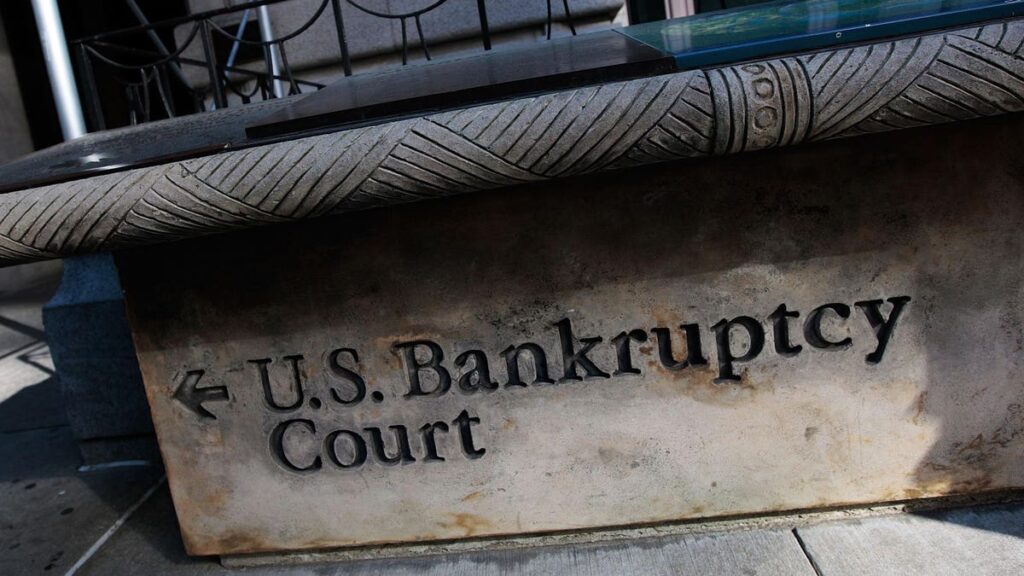I’ve never been quite sure whether the phrase, “May you live in interesting times” is meant as a blessing or a curse. Regardless of your point of view, the first half of 2023 has been interesting, to say the least. Just after Memorial Day, we saw bankruptcy filings by Diebold Nixdorf (the Ohio-based manufacturer of ATMs, credit card readers and self-checkout machines), Wesco Aircraft Holdings (the aerospace supplier d/b/a Incora), and GenesisCare (the cancer care treatment provider). All three of these major Chapter 11’s occurred in the same 12-hour period. All three were victims of a scenario we‘ve seen many times before. Namely, taking on extreme debt which ultimately led to problems when macroeconomic headwinds changed.
Diebold started manufacturing bank vaults in the late 19th century and matured alongside the entire US banking industry. In 2016, it offered $1.8 billion in cash and shares to acquire its German rival, Wincor Nixdorf, to form Diebold Nixdorf. In announcing its intention to file for bankruptcy via a restructuring that many of its creditors had already agreed to support, it noted that a number of issues, including the pandemic and a continuing chip shortage, made it impossible to continue servicing its debt. In addition to pledging to continue paying suppliers while restructuring, the company is also looking to secure a $1.3 billion debtor-in-possession loan. Diebold’s stock will be cancelled, leaving shareholders with nothing after the dust settles, as occurs in nearly every bankruptcy.
GenesisCare on the other hand is a much newer company. With backing from KKR and China Resources Capital, it grew from a single cardiac clinic in Sydney, Australia in 2005, to specialize in radiotherapy cancer treatments in more than 300 facilities across three continents today. This company entered the US market in 2020 when it acquired 21st Century Oncology, a healthcare provider which itself had filed for bankruptcy in 2017, for $1.5 billion. GenesisCare intends to sell its US operations and concentrate on its remaining businesses in Australia, the UK and Spain. It has secured a $200 million in debtor-in-possession loan to allow it to continue operations while restructuring.
Incora, which was formed in 2020 through the merger of two companies owned by Platinum Equity, had $3.1 billion in debt at the time of its bankruptcy filing. This business suffered from the sudden disruption and subsequent slow recovery in the airline industry due to Covid. It also suffered from inflation and supply chain issues which left it short of critical parts needed for operations.
These three major bankruptcies have been in the headlines, but there’re many other companies on the verge of distress and possibly heading into Chapter 11, such as Tupperware Brands. Separately, there are many other well-known firms already in bankruptcy, such as Bed Bath & Beyond, Diamond Sports, National CineMedia, and Party City. With interest rates rising and so many companies over-extended, we expect the level of defaults to continue rising.
When reporting on defaults, many sell side analysts curiously omit banks. They do this because banks are usually investment grade rated and analysts studying defaults typically focus on sub-investment grade firms while searching for distress. However, that’s a little short sighted since it may ignore a massive amount of defaults by companies which were previously rated investment grade before plummeting into distress. Earlier this year, we witnessed three of the four largest bank failures in US history when First Republic, Silicon Valley Bank, and Signature Bank failed in the US. Simultaneously, Credit Suisse failed overseas before being forced to merge with UBS. Of course, there’s no guarantee that we won’t see more bank failures going forward given the systemic issues which toppled these distressed banks. If that is not a concern, it should be, since banking troubles often presage tremors throughout the entire economy.
I would describe what’s going on outside of banking as a normalization of credit markets. When interest rates were zero and borrowing money was effectively free, desperate lenders hunting for yield made many questionable moves, like issuing covenant-lite loans and lending to companies with no revenues. That type of speculation has vanished, and rationality is returning to fixed income markets now that lenders have a reasonable alternative. Today, they can get some yield simply by purchasing short-dated Treasuries, even with the risk of stubborn inflation eating at returns. In fact, the fixed income outlook right now is a little brighter than it’s been over the last few years, but things still might get worse before they get better as usually happens in markets. When interest rates climb, the market value of fixed income securities drops, while credit and inflation risks are the primary concerns that fixed income investors hope to avoid.
Right now, it looks as though the Fed will take a pause on rate increases in June as the dust from the US government default showdown settles, but the hikes might not be finished. Speculators have priced in a 50% chance of another 25 basis point hike at the Fed’s July meeting.
As mentioned earlier, the number of companies defaulting will likely grow going forward. Luckily, we avoided the biggest of all possible defaults when the Biden administration and Republicans in Congress reached an agreement to extend the debt ceiling and allowed the Federal government to continue paying its bills. But this agreement doesn’t really solve anything, nor does it address the biggest problem of all, which is that government spending vastly outstrips government revenue. Instead, it just kicks the problem down the road until after the next election. The US will continue steaming along on its way towards 150% debt to GDP.
Macroeconomic trends are highly uncertain right now. In the second half of this year, we will see a lackluster summer with considerably more stock market volatility during the fall. For clients willing to take risks right now, we recommend an increased focus on short selling, select purchases of distressed debt, and short-duration equity plays of companies that offer a rapid return of capital to their owners.
But as always, we caution that successful investing requires a great deal of effort. It takes hard work to conduct fundamental analysis of a company, including market analysis and projections, evaluations of management and the company’s intrinsic value. Looking at a company’s fundamentals is not as easy as buying an ETF tracking a particular index, but if done properly it can be quite rewarding
Read the full article here













